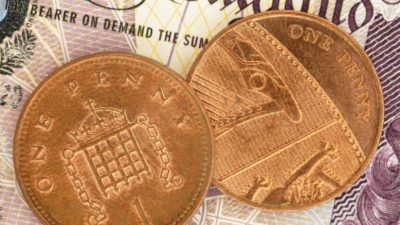Since the FTSE 100 was created in 1984, it has recorded a total return of around 9% per annum. When you consider that during the period it has overcome a multitude of problems including the 1987 crash, Black Wednesday, the dot.com bubble, 9/11, the credit crunch and the commodity crisis, it’s perhaps surprising to think that the UK’s leading index of shares has performed so well.
Of course, there’s no guarantee that the index will replicate that kind of return in the next 32 years or so. Judging by the index’s performance in the second half of that period, many investors will be rather lukewarm about buying the FTSE 100 since it’s trading lower than it was around 16 years ago. However, the index has huge potential to rise for a number of key reasons.
The global factor
One reason is an improving global economy. Although the US has endured a difficult period in recent years following the credit crunch, the policy route taken by the Federal Reserve has ultimately proved successful and was the right thing to do. Because the US recapitalised its banks early and weakened its currency through the adoption of ultra-low interest rates and a monthly asset repurchase programme, its economy is posting impressive growth numbers.
Looking ahead, the US economy looks set to continue to enjoy increased jobs and higher levels of GDP and even though interest rates are on the rise, the market seems to be happy that the Federal Reserve will only tighten monetary policy at a very slow pace.
Similarly, the Chinese economy could boost the FTSE 100’s performance as it transitions towards a consumer focus. While the challenges it’s facing in doing so have caught some investors by surprise and have caused investor sentiment towards the world’s second largest economy to deteriorate somewhat, it remains a superb opportunity for long-term growth for a number of FTSE 100 constituents.
With the world’s two largest economies having bright futures, the FTSE 100 could return to its ‘first half’ performance that contributed the bulk of the 9% per annum total return of the last 32 years.
It pays to diversify
Clearly, investors seeking to tap into this high level of growth potential should diversify among a wide number of stocks and sectors, since the commodity crisis has shown that being overexposed to one industry can lead to pain in the short run. Furthermore, there’s a temptation to trade in the short run rather than invest for the long term. The latter option keeps costs down and provides the time companies within the FTSE 100 need in order to come good following strategy changes and new product releases.
While a 9%-plus return may sound rather optimistic as asset prices continue to come under a degree of pressure, investing in a wide range of quality companies and holding onto them for the long haul can yield a superb return – just as the FTSE 100 has done in the last 32 years.






